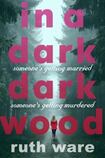
In Northanger Abbey Jane Austen called it the "tell-tale compression of the pages", the sense that a novel is coming to a close. Reviews seldom discuss endings, for obvious reasons, yet they're fundamental to a reader's satisfaction. The best of them capture the essence of what has gone before and give a sense of completion.
Think – spoiler alert – of The Great Gatsby's closing line and how it sums up the novel's overarching theme: "So we beat on, boats against the current, borne back ceaselessly into the past." Or how the penultimate sentence of Colm Tóibín's Brooklyn encapsulates the life unlived, all the pain and regret that go with it. Fictional endings help us to make sense of the ways we try to make sense of our lives.
The pressure to deliver is immense: questions must be answered, ambiguities resolved, loose ends tied up, judgments passed. In crime fiction there is arguably a bigger onus on the writer. Psychological thrillers lure readers in with the promise of a mystery and a revelation. Even recent bestsellers such as Before I Go to Sleep and Gone Girl left many disappointed that the twists and revelations did not live up to earlier promise.
A similar problem occurs with Ruth Ware's engaging debut novel, In a Dark, Dark Wood. A compelling narrative loses its way in the final quarter, with a denouement that is both predictable and drawn out. There is much to recommend in it before this: sharp writing, vibrant characters and an intriguing set-up that sees a group of girls, and a gay man, gather for a hen party in an isolated house in a wintry English woodland.
Nora, the narrator, is a crime writer in her mid-20s who is shocked when she receives an email inviting her to the hen of an estranged school friend, Clare Cavendish. Although she hasn’t heard from Clare in 10 years, Nora is cajoled by Flo, the bridesmaid, into attending the bash. A stream of ingratiating emails from the demanding bridesmaid are a great introduction, all smiley faces and kisses and grievous abuse of exclamation marks amid declarations of making the weekend the best party ever.
Poignant storyline
Things don’t go to plan for poor Flo, a nervous mess of a character who starts out as a figure of fun. Her mental-health issues will build to the most poignant storyline of the book. Other characters are equally well drawn: Nina, a snarky surgeon, Melanie, a new mother, Tom, an arrogant playwright, and, of course, the bride herself: beautiful, popular and bent on perfection.
“I don’t know if you know what it’s like being chosen by someone like Clare,” Nora tells us early on. “It’s as though a warm searchlight has picked you out and bathed you in its sunshine.”
Grim weather, dark woods, no mobile-phone signal and footprints in the snow are all indicators that this will be no ordinary hen party. Ware sets up a charged atmosphere in the house from the beginning.
Excruciating introductions, shared bedrooms, mandatory tequila shots, and peer pressure to take cocaine result in a cringe-inducing game of truth or dare, where the group learn that Clare’s fiancee is actually Nora’s first love, James.
Nora herself has only learned this hours before. While out for a run to escape the housemates, she is picked up by Clare and begins to suspect that her invitation has a darker undertone. Having her own troubled past, Nora, or Lee as Clare persists in calling her, yearns to leave, but there’s no way out without causing a fuss.
Back in the house Tom, the playwright, knowingly comments on a gun above the mantelpiece: “Haven’t they heard of Chekhov round here?” Hitchcock and Agatha Christie are also referred to, with intertextual touches lightly incorporated.
Ware’s book is Agatha Christie for the modern woman: a whodunnit set against a backdrop of bitching, one-upmanship and “naughty games”.
In a dual narrative the action switches back and forth from the house to a hospital bedroom, where an amnesiac Nora is bruised and battered and clueless about why policemen stand guard outside her door.
A well-worn literary device, the memory-loss scenes grate in the latter half, being obviously used to prolong the suspense and delay the revelation. A later section that sees Nora return to the house stretches credibility, as does a shoddy attempt to undermine her own story and implicate herself in the killing.
This is a shame in an otherwise suspenseful novel that offers a clear window on modern society and the rigmarole surrounding special occasions. Murder is terrifying, of course, but nowhere near as scary a hen party.
Sarah Gilmarti n is an arts journalist











